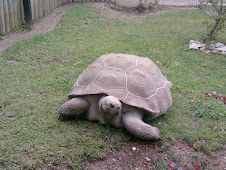
Caring for your red eared sliders may be difficult due to the size of the tank. Full tank cleanings are not necessary very often. In fact, in a well maintained tank, you may not need a full tank cleaning for a couple years!
A full tank cleaning should be done:
• Every time the full tank water is replaced
• If any of the turtles/other aquatic life gets diseased (due to a non-dietary cause)
• If you observe too much algae growth in the habitat
When cleaning the habitat, remove all animals, remove all decorations and equipment and empty out the water as completely as possible. Clean all decorations and equipment including any gravel or rocks as best as possible. Wash tank insides with hot water (don't use boiling water as it can crack the glass). Use a sponge or old newspaper to wipe all the inside surfaces and remove any algae. For corners and edges it is recommended to use an old toothbrush.
Do NOT use any detergent!
It's normal to follow up with a mild and safe disinfectant. Aquarium Pharmaceuticals Safe & Easy Aquarium Spray Cleaner is what I recommend to remove any hard water residue on the tank and equipment. NEVER use any containing phenol or phenolic compounds - and always rinse thoroughly before refilling. A 5% vinegar solution works well also.
Make sure to rinse well, and then fit in the cleaned gravel, decorations, and equipment in the tank. Add clean water. You can also add 1 level teaspoon of freshwater aquarium salt for every 4-5 liters of water. This prevents the growth of 'bad' bacteria and helps prevent shell and skin diseases and excessive algae growth in the tank. Try starting your clean water out with Zoo Med's Reptisafe. This water conditioner instantly makes tap water safe for all types of reptiles and amphibians. I would also recommend a waste control product be used in your tank to efficiently reduce solid turtle waste and leftovers from overfeeding.
Run all equipment for at least 30-45 minutes, before returning the animals to the habitat.
Caution: Don't clean any habitat decorations/equipment, in the kitchen or any food storage, preparation or consumption areas. Wash all utensils/containers used to clean the habitat with a mild bleach solution afterwards. Throw the old habitat water in the toilet, outside or in a laundry room sink and not the kitchen sink!
Information from this blog was received from http://www.happyturtlespub.org/habitat/cleanmaint/



